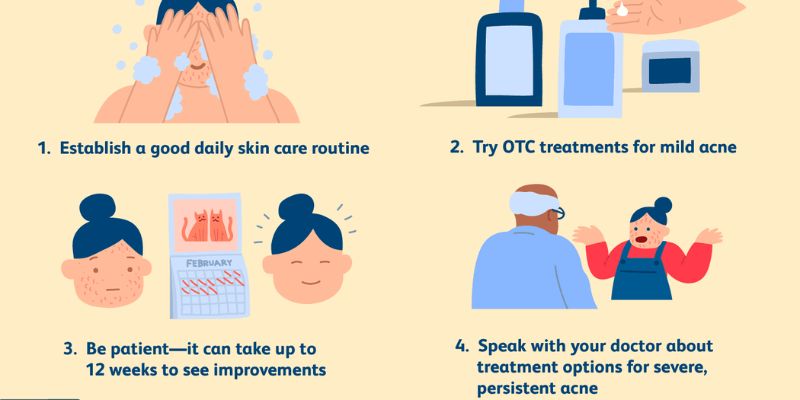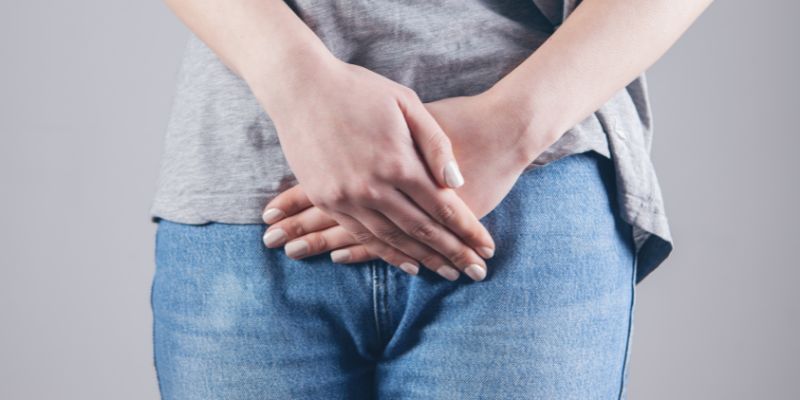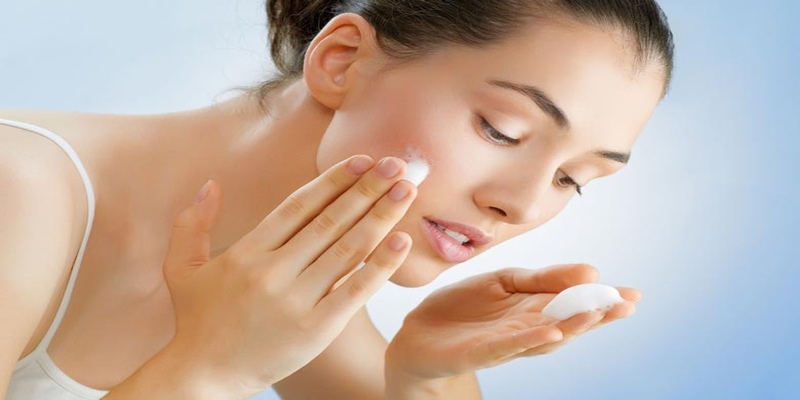Dealing with acne can feel like a never-ending battle, and no two cases are alike. If you've ever been frustrated by those tiny white dots that seem to keep appearing on your face, you may be battling closed comedones – also known as whiteheads.
Let's look at what causes these little bumps to develop, how we can identify them from other types of acne, and what steps we can take to help manage them as part of an overall skincare routine.
Closed Comedones

Closed comedones (whiteheads) form when dead skin cells, dirt, and oils accumulate in the opening of a hair follicle. This blockage causes inflammation of the sebaceous glands as the bacteria build up within the follicle, leading to a swollen bump that can be yellowish or white.
Unlike other types of acne, closed comedones are not usually painful. However, they can be difficult to treat since the bacteria and oils are trapped inside the follicle.
Symptoms of Closed Comedones
- Closed comedones, or "whiteheads," are small bumps on the skin due to clogged pores.
- They can range in size from 2-5 millimeters and typically have a white or yellowish hue.
- Their appearance is often likened to a pinhead, as they are quite small.
- Closed comedones can occur anywhere on the body but most commonly appear on the face, chest, shoulders, back, and arms.
- Closed comedones usually appear as tiny white or yellowish bumps on the skin.
- Sometimes they may also be slightly reddish around the edges due to inflammation caused by bacteria or oils trapping sebum (oil) inside them.
- Although they may look like pimples, they do not contain pus.
Causes and Risk Factors
Knowing the causes and risk factors associated with closed comedones can help you identify when they're likely to develop and take steps to prevent them.
Causes of Closed Comedones
The main cause of closed comedones is excess sebum production in the skin, which leads to clogged pores. Sebum is an oily substance produced by the sebaceous glands in our skin, which helps keep it soft and hydrated.
When too much sebum builds up in the pores, it mixes with dead skin cells and bacteria, creating a blockage that traps the sebum inside. This blockage forms a whitehead visible on the skin's surface.
Risk Factors for Developing Closed Comedones
Several risk factors can increase your chances of developing closed comedones. These include:
- Hormonal imbalances such as PCOS or hormonal birth control
- An unhealthy diet high in processed foods and sugars
- Oily skin type
- Not cleansing the skin properly or regularly enough to remove excess oils and bacteria from the skin's surface.
- Certain medications or topical creams that cause an increase in oil production on the face
- Excessive stress or anxiety, which can lead to increased sebum production
Traditional Treatments

Traditional treatments for closed comedones (whiteheads) include topical creams, lotions, and gels. These contain salicylic AcidAcid, benzoyl peroxide, or retinoids to help reduce inflammation and promote skin exfoliation.
Additionally, many over-the-counter products and prescription medications can relieve whiteheads and other types of acne.
Topical Medications
When managing whiteheads, topical medications are highly effective at reducing breakouts. The most commonly used ingredient in these products is benzoyl peroxide. It reduces bacteria on the skin's surface that contributes to blackhead formation.
Salicylic AcidAcid is another common ingredient in topical medications, which can help reduce inflammation and encourage cell turnover, while retinoids are great for unclogging pores.
Prescription Medications
In more severe cases of whiteheads, prescription medications may be necessary to provide relief. These include antibiotics, suppressing the bacteria that cause breakouts, and reducing inflammation.
Additionally, corticosteroids can be used with other treatments to help reduce swelling and redness associated with whiteheads. Isotretinoin is also a viable option for those with severe acne who are not succeeding with other treatments.
At-Home Treatments
At-home treatments can also offer some relief from whiteheads and other forms of acne. For example, gentle exfoliation with a facial scrub twice weekly can help remove dead skin cells and unclog pores.
Additionally, using a warm compress over the affected area for 15 minutes thrice daily can help reduce inflammation and open up the pores. Finally, cleansing your face daily with an oil-free cleanser will help keep skin clear of dirt and debris contributing to breakouts.
It is important to be patient no matter your treatment, as treating whiteheads requires time and consistency. It may take several weeks or months to notice significant results from any product or combination of treatments. With patience and dedication, you should find yourself on the path to clearer skin.
Lifestyle Changes That Can Help Reduce Your Risk Of Breakouts
Lifestyle changes, including whiteheads, are often the first step in dealing with acne. Making the right adjustments to your daily routine can help reduce your risk of breakouts and keep your skin looking its best. Here are some lifestyle changes you should consider if you're dealing with closed comedones:
- Eat a healthy diet: Your body needs essential vitamins and minerals to stay healthy, especially for your skin. Eating a balanced diet rich in fruits and vegetables, lean proteins, whole grains, and low-fat dairy products can help nourish your skin from the inside out – reducing your chances of developing acne breakouts.
- Stay hydrated: Staying hydrated is essential for overall health, especially when dealing with closed comedones. Drinking plenty of water helps flush out toxins from your body, which can help reduce the risk of breakouts.
- Reduce stress levels: Stress can have a major impact on your skin, so making time for relaxation and reducing stress levels can be beneficial in managing whiteheads. Taking part in calming activities such as yoga or meditation can help lower stress levels and keep breakouts at bay.
- Avoid environmental pollutants: Pollutants like dust and smog can clog pores and increase sebum production, resulting in more severe acne breakouts. Try to avoid prolonged exposure to these types of environmental pollutants.
- Take care of your skin: A good skincare routine is essential for keeping your skin healthy and free from acne. Cleansing with a gentle, non-comedogenic cleanser twice daily can help keep your pores clear and reduce the risk of breakouts. You should also follow up with an oil-free moisturizer to help balance sebum production. For persistent whiteheads, topical retinoid creams can reduce inflammation and prevent new lesions from forming.
Making the right lifestyle changes and following a good skincare routine can reduce your risk of developing whiteheads – helping keep your skin looking its best!
Natural Ingredients for Closed Comedones
- Tea Tree Oil - this antibacterial oil helps reduce inflammation and can help prevent further breakouts.
- Witch Hazel is an astringent that can help skin tone and reduce inflammation.
- Aloe Vera - Rich in anti-inflammatory properties, aloe vera gel, moisturizes the skin while helping to reduce redness and irritation associated with whiteheads.
- Salicylic AcidAcid - this beta hydroxy acid helps unclog pores, remove dead skin cells, and keep sebum production in check.
- Honey - a natural antiseptic that provides hydration and reduces inflammation.
FAQs
What do dermatologists prescribe for closed comedones?
Dermatologists may prescribe topical medications such as benzoyl peroxide, salicylic AcidAcid, and retinoids for closed comedones.
Are there any at-home treatments for whiteheads?
Yes! At-home treatments can help reduce the appearance of whiteheads. Gentle exfoliation with a facial scrub twice weekly can help remove dead skin cells and unclog pores. Additionally, using a warm compress over the affected area for 15 minutes thrice daily can help reduce inflammation and open up the pores.
What are the main causes of closed comedones?
Closed comedones are caused by a buildup of oil, dirt, and other debris in the pores. Hormones, genetics, stress levels, and environmental pollutants can exacerbate this.
Conclusion
Closed comedones are a type of acne caused by the clogging of skin pores. Its symptoms are the appearance of small, dome-shaped bumps on the skin. Causes include certain topical products, genetics, excessive skin oil production, bacteria in a person's skin microbiome, poor hygiene habits, using too many topical products at once, and experiencing hormonal fluctuations in adolescence or adulthood. Traditional treatments and lifestyle changes can help reduce this. Various Natural ingredients can also soothe irritation while treating existing comedones.




